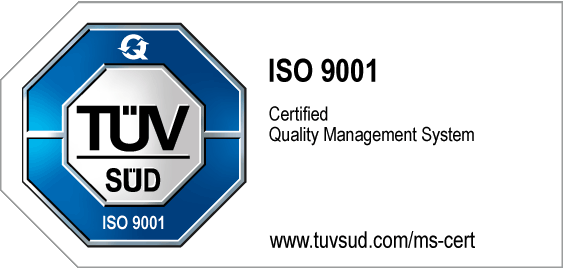Trend Scouting – At a Glace
| Importance and Application: | Trend scouting is a method aimed at identifying new developments and innovations in order to use future trends for strategic planning and product development. The goal is to remain competitive and to respond early to market changes. |
| How trend research works: | Trend research helps detect subtle market shifts and evolving consumer behavior that may influence demand and purchasing patterns. By analyzing market trends, organizations can uncover new market opportunities and minimize the risk of missing critical developments. |
| Conducting trend scouting: | The method involves collecting and analyzing information from sources such as industry reports, social media, and innovation fairs to spot emerging trends and assess their relevance for the company. |
| Benefits of the Method: | Trend scouting enables companies to take advantage of market changes early, secure competitive advantages, and minimize risks by identifying opportunities early and integrating them into the strategy. |
| Weaknesses and Challenges: | Correctly assessing the relevance of a trend is challenging, as not all developments are successful in the long term. Trend scouting is often resource-intensive and carries the risk that insights may quickly become outdated due to dynamic market changes. |
What is Trend Scouting and what is it used for?
Trend scouting is a systematic process for identifying and analyzing new developments, technologies, and behaviors that may influence future markets and industries. Its goal is to provide companies with valuable insights into upcoming changes so they can proactively respond to new opportunities and challenges.
By identifying trends early on, organizations can develop innovative products and services that meet the needs of their target groups and make strategic decisions based on solid foundations.
An essential tool in trend scouting and strategic trend management is the trend radar:
- This visual tool clearly and interactively summarizes the results of comprehensive trend analysis.
- By structuring and visualizing trend data in the trend radar, decision-makers are enabled to quickly grasp complex information and efficiently assess relevant trends in their industry.
It helps companies detect potential trends that could impact their future success.
Understanding the competitive landscape allows organizations to position themselves effectively in a rapidly changing environment.
Trend scouting also uncovers innovation opportunities that can drive long-term growth and differentiation.
How Trend Research works
Trend research works through a structured approach to identifying, analyzing, and evaluating emerging trends across various industries and markets.
The process usually begins with the collection of data from a wide range of sources, including social media, market analyses, scientific publications, innovation fairs, and consumer surveys.
Once the data is gathered, trend analysis is conducted to pinpoint patterns and signals that point to future developments. This can involve qualitative methods such as focus groups and expert interviews, as well as quantitative methods such as surveys and statistical analyses.
The insights gained are then interpreted and assessed in terms of their relevance to the company or industry to support strategic decisions.
Finally, the identified trends are monitored regularly in order to adapt strategies if market conditions or consumer preferences change.
Conducting Trend Scouting – Step by Step
Trend scouting, as a method in trend management, enables companies to make informed decisions and maintain their competitiveness in a dynamic market environment.
To help you successfully apply this approach, we have summarized the process in a step-by-step guide:
- Define Objectives: Determine the specific goals of your scouting activities, such as identifying new business opportunities, understanding consumer trends, or spotting technological developments within the industry.
- Define Topics and Focus Areas: Specify which industries, markets, or themes are relevant for your company and focus on these areas to collect targeted data.
- Detect Information Sources: Determine relevant sources for data collection, such as industry reports, academic publications, blogs, social media, innovation fairs, and competitor analyses.
- Collect Data: Trend scouting begins with the active collection of data from the identified sources. Use a variety of methods such as online research, expert interviews, surveys, or monitoring social media platforms.
- Analyze Data: Analyze the collected data to discover patterns and trends. Look for recurring themes, behavioral changes, and technological innovations that could potentially impact the business.
- Trend Analysis and Evaluation: Evaluate the identified trends in terms of their relevance, potential, and possible impact on your company. Consider both opportunities and risks.
- Document Insights: Record the results of your analysis in writing and create a trend radar that summarizes each key trend, its significance, and possible strategic implications.
- Derive Strategic Actions: Based on the insights, develop strategic measures or recommendations for action to respond to the identified trends.
- Monitor and Adapt: Establish a process for continuously monitoring the identified trends in the trend radar and regularly adapt strategies to respond to new developments and market changes.
- Gather Feedback: Regularly gather feedback from internal and external stakeholders to assess the effectiveness of your scouting activities and optimize the process if necessary.
Key Benefits of the Method
Trend scouting helps companies spot new trends at an early stage and thus secure a competitive advantage. It enables the development of products and services that meet consumer needs.
Additionally, trend scouting provides data-driven insights that support well-founded decisions and targeted strategic planning. The process also promotes a culture of innovation and creativity by encouraging employees to explore new ideas and approaches for changing market conditions.
By detecting weak signals early, organizations can anticipate shifts before they become mainstream.
The data-driven nature ensures that strategic initiatives are based on evidence rather than intuition.
It also helps companies stay ahead of technological advancements that could disrupt their industry.
Moreover, trend scouting reveals emerging patterns in consumer preferences, helping companies better align their offerings with evolving expectations.
It plays a key role in innovation management by identifying promising ideas and validating them before committing to large-scale development.
These insights can significantly improve the timing and relevance of product launches, increasing the likelihood of market success.
Frequently asked questions and answers
The trend scouting process involves systematically identifying emerging technologies of competitors and shifts in consumer behavior through targeted market research. It includes analyzing data from various sources to detect early signals of change and assess their relevance.
The insights gained feed directly into innovation management and help organizations to anticipate market developments early. This proactive approach supports the development of a forward-looking innovation strategy and ensures a sustainable competitive edge.
A trend scout is a professional who identifies changes in consumer demand and market dynamics at an early stage. They gather and analyze information from diverse sources to uncover relevant trends and emerging opportunities. Their insights help guide innovation projects and support strategic decision-making.
Sources:
- Gordon, T. J., & Glenn, J. C. (2003). Futures research methodology. Millennium Project of the American Council of the United Nations University, New York
- Kosow, H., & Gaßner, R. (2008). Methoden der Zukunfts-und Szenarioanalyse: Überblick, Bewertung und Auswahlkriterien. IZT
- Richards, H. J., & Pherson, R. H. (2010). Structured analytic techniques for intelligence analysis. Cq Press.
- Lindgren, M., & Bandhold, H. (2009). Scenario Planning-Revised and Updated: The Link Between Future and Strategy. Springer
- Ringland, G., & Schwartz, P. P. (1998). Scenario planning: managing for the future. John Wiley & Sons
- Ritchey, T. (2011). General morphological analysis (gma). Wicked problems–Social messes, 7-18.
- Schwarz, P. (1991). The art of the long view: planning for the future in an uncertain world. Currency Doubleday, New York
- Van der Heijden, K. (2011). Scenarios: the art of strategic conversation. John Wiley & Sons.


